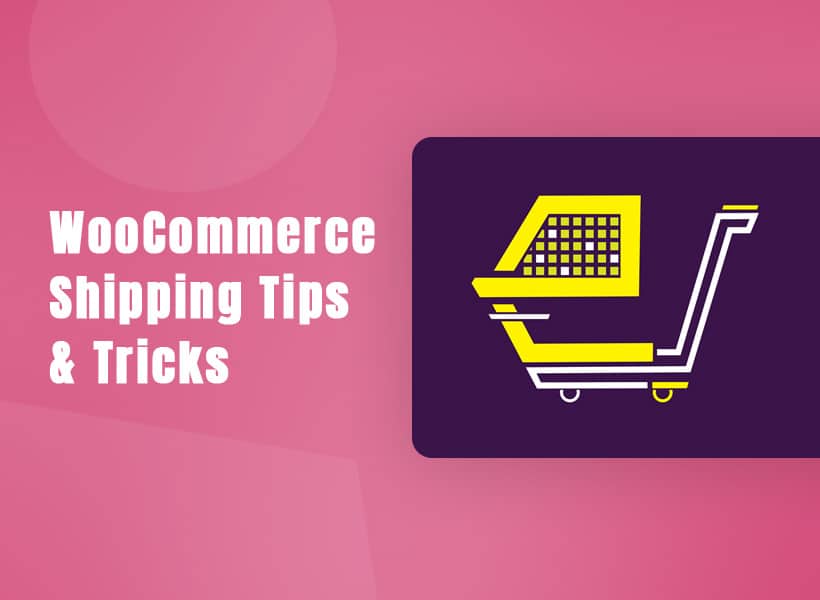WooCommerce Shipping Tips & Tricks

Shipping is the backbone of any successful WooCommerce store. It directly impacts customer satisfaction, influencing everything from shopping cart abandonment to repeat business. For ecommerce businesses, a well-defined shipping strategy is as important as the products’ quality. This article explores effective shipping strategies for WooCommerce, highlighting essential plugins, and providing actionable tips to optimize your shipping process for both customer satisfaction and profitability.
Role of Shipping in Ecommerce Success
In today’s competitive ecommerce world, shipping is more than just logistics; it’s a critical component of the customer experience. Offering flexible, affordable, and dependable shipping can:
- Reduce Cart Abandonment: Customers abandon their carts because of high shipping costs or limited options when they are shopping.
- Brand Loyalty: Customers appreciate businesses that meet their shipping expectations, whether it’s speed, affordability, or clear communication.
- Boost Sales: Attractive incentives like free shipping above a certain order value can encourage larger purchases.
WooCommerce Shipping Challenges:
Many WooCommerce store owners came across obstacles when setting up or configuring their shipping processes. Typical challenges include:
- Tricky Shipping Situations: Businesses selling diverse products often need to manage complex shipping rules based on weight dimension, location, or product type.
- Balancing Shipping Costs and Profitability: Offering competitive shipping rates while maintaining healthy profit margins can be a delicate balancing act.
- Limited Functionality of Basic Tools: The standard WooCommerce shipping settings may not be sufficient for businesses with specific needs, leading to inefficiencies.
- Meeting Customer Expectations: Balancing fast delivery with affordability is a constant challenge in today’s fast-paced market.
WooCommerce Shipping Strategies to Win:
To address these challenges, consider implementing these proven shipping strategies:
-
Accurate Planning of Free Shipping Offers:
Free shipping is a powerful motivator, but it needs to be implemented strategically:
- Minimum Purchase Thresholds: Ship larger orders by offering free shipping above a certain amount.
- Targeted Free Shipping Zones: Offer free shipping within specific regions or domestically.
- Promotional Free Shipping: Utilize free shipping during sales events or holidays to drive conversions.
-
Diverse Shipping Options:
Cater to varying customer needs by offering a range of shipping options:
- Economy Shipping: A cost-effective option for customers who aren’t in a hurry.
- Expedited Shipping: Faster delivery for a premium.
- Local Pickup: A convenient and cost-saving option for local customers.
- Same-Day Delivery (where applicable): A premium offering for select locations.
-
Real-Time Shipping Rates:
Displaying real-time rates ensures transparency and accuracy. Integrating with carriers like FedEx, UPS, or USPS provides customers with precise shipping costs based on their orders.
-
Table Rate Shipping for Complex Shipping Needs:
Table rate shipping is a valuable option for businesses with complex shipping requirements. It allows you to define rules based on:
- Weight-Based Shipping: Charge according to the weight of the orders.
- Order Value: Offer tiered rates or discounts based on the total order value.
- Destination-Based Shipping: Customize rates for specific countries, states, or zip codes.
For a more detailed breakdown, explore Table Rate Shipping. Additionally, incorporating discounts into your pricing strategy can further enhance your shipping model – Set Up Discounts to attract more customers and boost conversions.
-
Transparent Shipping Policies:
Clear communication about shipping costs, delivery times, and return policies builds trust. Ensure your checkout process clearly displays:
- Estimated Delivery Dates: Provide realistic delivery estimates.
- Shipping Costs (including handling fees): Be clear about all associated costs.
- Return and Refund Policies: Make your policies easy to find and understand.
Essential WooCommerce Shipping Tools and Plugins
Optimizing your shipping strategy often requires specialized tools. Here are some popular choices:
- WooCommerce Shipping (Built-in): Suitable for basic shipping setups with straightforward needs.
- Advanced Shipping Plugins (Table Rate Shipping Pro): Ideal for businesses with complex shipping rules based on various factors like weight, dimensions, product type or product category, shipping class, and zone-based shipping.
- Carrier Integration Plugins (e.g., FedEx, UPS, USPS): Enable real-time rate calculations, label printing, and tracking updates. Also, these support various shipping services where you can able to ship according to customer’s requirements.
- Multi-Carrier Shipping Plugins: This allows you to offer customers a choice of carriers and shipping methods at checkout.
Tips for Shipping Optimization
- Shipping Analytics: Analyze your shipping data to understand customer preferences and identify areas for improvement.
- A/B Testing: Experiment with different shipping strategies and offers to find the optimal balance.
- Automation: Automate tasks like rate calculations, label printing, and tracking updates to save time and minimize errors.
- Proactive Communication: Keep customers informed about their shipments to avoid confusion and enhance their experience.
Conclusion
Shipping is a cornerstone of ecommerce success. By implementing the right strategies, leveraging powerful plugins, and prioritizing transparency, you can create a smooth and satisfying shipping experience that drives customer loyalty and business growth. Whether you’re a small startup or a large enterprise, a well-executed shipping strategy is essential for thriving in the competitive world of online retail. Start optimizing your WooCommerce shipping today to gain a significant competitive advantage.

